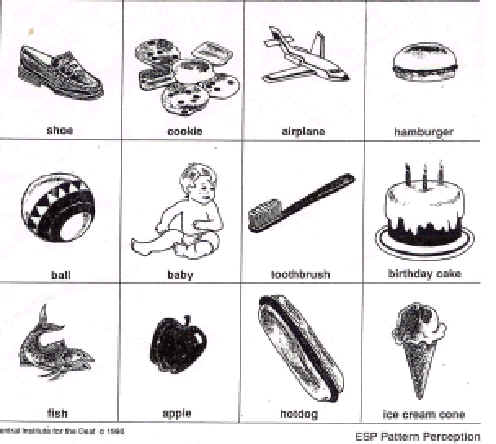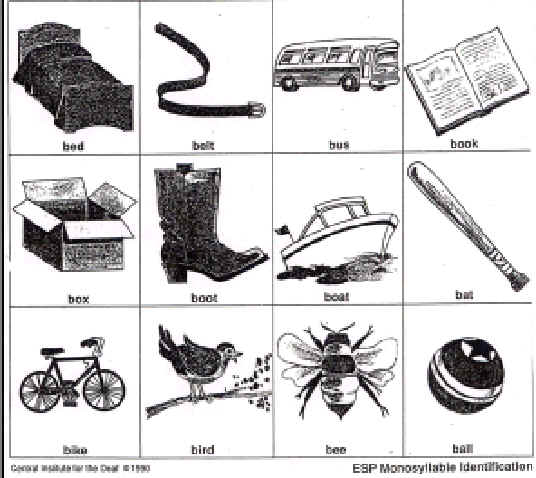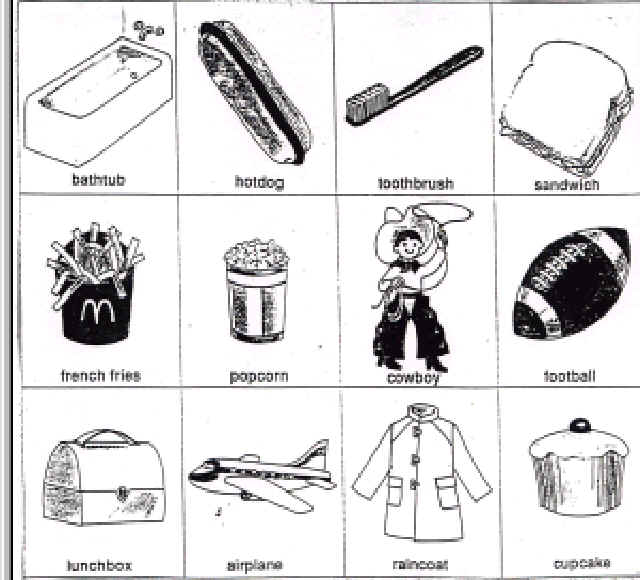
|
Paul Sommer's Cochlear Implant Journal
|
Entry #4: April 11, 2003 (one month after CI activation)
I attend my first auditory therapy session on March 27th (two weeks after CI activation) with Jim Watson, a renowned Auditory-Verbal therapist based in Gloucester, Massachusetts, which is an easy 55 minute drive from home. We meet at Jim's home office, which he shares his practice with his wife, Lea. Jim's office is very homey with a beautiful view overlooking the water. Jim Watson happens to be a great-great-grandson of Alexander Graham Bell, who in addition to being the inventor of the phone, was a teacher for the deaf and hard of hearing. Many may find this ironic because the phone became the greatest impediment for many people who are deaf or hard of hearing (although we undoubtedly appreciate the phone, which later made the internet possible).
Jim Watson strives hard to reverse the barrier set by his forefather helping deaf or hard of hearing children and adults to maximize their residual hearing through amplification technology (i.e. hearing aids and cochlear implants) to listen, process verbal language, and speak with minimal reliance on lipreading. This process is well known as the Auditory-Verbal Therapy (AVT) method. Thanks to my parents' faith in AVT and my terrific therapists who helped me during my early days, including Helen Beebe, Don Goldberg, Mary Koch, Jim Watson, Betsy Parker, and many others, I should benefit much more from the CI. Having worked with Jim Watson also proves to be invaluable as he has a good understanding of my background.
We begin the one hour lesson (which will hopefully take place at least every other week) with a little catch up chit chat getting Jim up to speed on my CI progress. Yes, Jim is following this CI Journal all along, which helps. I tell Jim that I hear lots of sounds, especially environmental sounds, but am unable to discriminate anything without visual cues yet. Jim and I agree that the first session will be to mostly gauge where I stand now and take baby steps.
Jim starts by saying and visually showing me the six Daniel Ling sounds: MM, AH, EE, OO, SH, and SS. Without such visual cues, I would have no idea what Jim says since I am not able to blindly discriminate sound yet. These sounds are the fundamental sounds used for assessing hearing ability as proposed by Daniel Ling, a pioneer AVT. Jim presents these sounds aloud from 3, 6, 9, and 12 feet away while covering his mouth to reinforce my listening as I could not lipread him. Of the 24 sounds Jim presents, I get only one correct. I keep mixing up the S with the SH. I also mix up the MM, AH, EE, and OO with each other. Jim reminds me not to despair as it has only been two weeks since getting the CI and that it will be a long process. Jim then tests me on the sounds using both my CI and hearing aid. I, of course, perform much better getting virtually all of them correct, which is a good sign because I clearly have a good auditory foundation making it easier for me to adapt to the CI.
Jim then proceeds to work with me on discriminating words. He puts the following chart in front of me:

Before testing me, Jim reads aloud each word so I'd have a good example of how the words sound before I try to discriminate the words. Jim lets me start easily by just presenting any of the three words in the left column. I have little difficulty with the three objects in the first column, especially since I could hear the SH at the start of "shoe" and SH at the end of "fish." Jim then proceeds to do each column one by one to the right, which gets harder and harder as they sound more similar to one another. I have a much easier time with the column on the far right since they sound a bit more differently from one another. Jim then challenges me and by saying any of the 12 objects altogether. That is definitely frustrating, especially since "shoe" sounded like a two syllable word to me. I was mostly able to get the three syllable words since they, again, are a bit easier than the others. Jim then asks me to turn on the hearing aid and go through the same exercise. This time, I got virtually all of them correct.
Although we didn't try it, I believe I may be able to score between 25 to 99% correctly (depending on how well I know the person) if I had never been told what set of words were going to be read aloud purely using my auditory skills. But with my CI and without visual cues, I probably would not do any better than 1%.
Finally, Jim reads aloud the first half of the following questions, which I'd try to discriminate:
Hello! How are you?
What time is it?
What is your name?
How old are you?
What is the date today?
Where do you work?
When is your birthday?
What is your address?
What is your phone number?
Do you have a car?
What's the weather today?
I think I do fairly well getting at least half correct although I ask Jim to repeat each question at least once or twice as I seek clues here and there, such as how the first word starts or the last word ends. It's the same deal with the second set of questions.
At least an hour passes and it's now time to end the lesson. Jim kindly gives me all the material we go over today so that I could work on them at home with Sarah.
The next evening, Sarah and I have our first private lesson using only my CI and basically go through the exact same exercises I did with Jim. We start with the Ling sounds, which goes much better this time with Sarah. However, it's important to note that my performance may be spiked because I know Sarah and her speech much better than Jim's. I score 10 correct out of 24 this time:
| Distance | MM | AH | EE | OO | SH | SS |
| 3 feet | AH | AH | OO | OO | SH | SS |
| 6 feet | AH | OO | EE | MM | SH | SS |
| 9 feet | OO | AH | S | MM | SH | SS |
The following night I score 12 out of 24 as I do slightly better on the EE and MM sounds.
Sarah then reads aloud from the chart of 12 objects (as pictured above) starting from the left column to the ones on the right and then mixes them up. I demonstrate significant improvement getting many of them right. I now get every single one of them correct.
Sarah also reads aloud the list of questions starting with just the first half of the list and then the second half. I do much better than 24 hours earlier with Jim. I now can correctly discriminate every question Sarah asks from the list altogether - not just one half than the other.
Buoyed by my progress, I return to Jim Watson for my second appointment on April 10th. We start the lesson again with an update on my CI progress. I tell Jim that I am picking up a lot of environmental sounds including:
cars driving by outside our home, especially when I'm in the front room,
Sarah typing on the computer 20+ feet away from the kitchen/dining area,
the water running in the kitchen from the computer room (20+ feet apart),
the gas stove ignition clicking when turning on the gas stove (my cousin Jonathan should be impressed with this one because he visited us several months ago before I got the CI and noticed that I left the ignition on as he could hear the clicking whereas I could not), and
my pants rubbing against each other when I cross my legs.
Jim then tells me about how some of his students could hear certain things in his office. In response, I ask Jim to be quiet so I'd listen to see if I could hear anything myself. Sure enough, I hear the clock ticking on the wall about 6 feet away! Now Jim and I are duly impressed with that one! "One small tick for man, one giant tick for mankind!"
Anyway, Jim and I repeat the same drills we did during the first lesson primarily only using my CI. I do much better on the Ling sounds this time although not quite as well as I do with Sarah, which I attribute to my being more familiar with Sarah's speech. Jim believes that additional mapping of the CI may help me better distinguish the AH, MM, EE, and OO sounds. I will make special note of this to Jennifer Yeagle when I return for my 4th mapping session. "It's all in the shoes!"
Since I tell Jim that I am mastering the 12 objects chart, he decides to skip that one and start with a harder one as follows:

This one is much harder since all of the objects start with the letter "B" and have only one syllable. I am able to discriminate at least 25% of the words, but whenever I'm mistaken, I am very close to the correct word. For example, if Jim says "boot," I answer, "book." Clearly, I can discriminate the "boo" part, but need to work on the "t" versus "k."
Jim and I then proceed to work on the following 12 objects, which is a bit easier as I get at least two-thirds of them correct:

Jim then gives me all the above charts along with another bunch of sentences or questions to work on at home with Sarah. But we do one more activity - a game that is specifically for 2 to 6 year olds, according to the game box. The objective of the game is to listen to the accompanying tape and decipher which sound I was hearing by using visual cues on the game board, which displays 36 different pictures ranging from kids playing different musical instruments to different types of vehicles (i.e. airplane, train, and car) to various animals (i.e. horse, frog, cow, duck, sea gulls, whales, etc.). This is very challenging, especially because I have never heard most of these sounds before. And if I have heard them, they are mostly imitation sounds made by humans. For example, I think frogs say "croak" because that's what people tell me; but the tape, which is a live recording of an actual frog making its typical sound, does not sound anything like "croak!" I get about 6 out of the 36 sounds correct, including sounds of someone hammering, a helicopter flying, someone playing the piano, a plane flying, and one or two others.
More than an hour passes so it's time to wrap up for the day. When I get home, I make a point to see if I can hear our clock at home tick. Sure enough, I can from about ten feet away. Sarah's response was, "That's so freaky!"
Overall, I'm pleased with the steady, although slow, progress I have made over the past month since being activated. I have been using the 3rd program (the loudest program of the three that Jennifer Yeagle gave me) for about a week as programs 1 and 2 are too soft now. Therefore, I'm definitely ready for my next mapping session on Monday, April 14th. Until my next lesson with Jim, I will work on the drills as mentioned above and listen to some children's books on audiotape while reading along. Stay tuned for further updates in the near future!
Next (Entry #5: April 18, 2003 - five days after fourth mapping session)
Back (Entry #3: March 25, 2003 - two weeks after CI activation)
| Entry #1 | Entry #2 | Entry #3 | Entry #5 | Entry #6 |